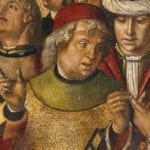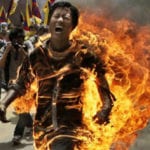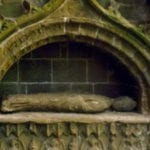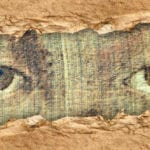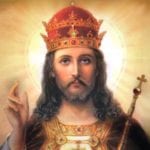 Technology
Technology  Technology
Technology  Humans
Humans 10 Everyday Human Behaviors That Are Actually Survival Instincts
 Animals
Animals 10 Animals That Humiliated and Harmed Historical Leaders
 History
History 10 Most Influential Protests in Modern History
 Creepy
Creepy 10 More Representations of Death from Myth, Legend, and Folktale
 Technology
Technology 10 Scientific Breakthroughs of 2025 That’ll Change Everything
 Our World
Our World 10 Ways Icelandic Culture Makes Other Countries Look Boring
 Misconceptions
Misconceptions 10 Common Misconceptions About the Victorian Era
 Mysteries
Mysteries 10 Strange Unexplained Mysteries of 2025
 Miscellaneous
Miscellaneous 10 of History’s Most Bell-Ringing Finishing Moves
 Technology
Technology Top 10 Everyday Tech Buzzwords That Hide a Darker Past
 Humans
Humans 10 Everyday Human Behaviors That Are Actually Survival Instincts
 Animals
Animals 10 Animals That Humiliated and Harmed Historical Leaders
Who's Behind Listverse?

Jamie Frater
Head Editor
Jamie founded Listverse due to an insatiable desire to share fascinating, obscure, and bizarre facts. He has been a guest speaker on numerous national radio and television stations and is a five time published author.
More About Us History
History 10 Most Influential Protests in Modern History
 Creepy
Creepy 10 More Representations of Death from Myth, Legend, and Folktale
 Technology
Technology 10 Scientific Breakthroughs of 2025 That’ll Change Everything
 Our World
Our World 10 Ways Icelandic Culture Makes Other Countries Look Boring
 Misconceptions
Misconceptions 10 Common Misconceptions About the Victorian Era
 Mysteries
Mysteries 10 Strange Unexplained Mysteries of 2025
 Miscellaneous
Miscellaneous 10 of History’s Most Bell-Ringing Finishing Moves
10 Disappointing Religious Movements
Some religions, say Christianity and Islam, grew from small groups of dedicated followers and become worldwide religions. Sometimes, these small religious groups grow into cults like the one led by Jim Jones that end with poisoned Flavor-Aid. But still other, mostly forgotten, religious moments promised divine salvation and military victory before ending in the strangest manners. And hundreds of people jumped off a cliff once and thought they could fly.
10 Moses Of Crete

In the fifth century A.D., Christianity was the dominant religion of the Mediterranean world over Judaism. This was partially due to the failed Bar Kokhba revolt in A.D. 132 against the Roman Empire. This rebellion, led by the messianic preacher Simon Bar Kokhba, culminated in an estimated 585,000 Jewish casualties. This significant depopulation sapped hope from the Jewish people.
This malaise set the stage for Moses of Crete’s antics around A.D. 440. Moses began his career with the surprising revelation that he was not simply named Moses, but that he was Moses. The Moses. Burning Bush Moses.
Naturally, this revelation caused a stir. Moses quickly collected followers through his charismatic preaching. Moses promised to lead the beleaguered Jews to safety by taking them across the ocean. His escape plan was the same as the original Moses’s—walk across the ocean and let the sea move out of the way.
Instead of walking on top or through the middle of the water like a normal prophet, Moses decreed that the journey had to begin from the top of an oceanside cliff. He convinced his followers to leave their lives and possessions behind and meet him at the cliff’s edge. From there, his gullible followers walked one by one off the cliff like lemmings.
The Jews plummeted right into the ocean and drowned. All would have died if local fishermen had not picked them out of the water. The lucky people at the end of the line noticed the pattern and ditched Moses before it was their turn. The prophet himself immediately disappeared after the failure and the Jewish people collectively gave up on messiahs for centuries afterward.
9 Nongqawuse

The Xhosa people had lived a carefree, seminomadic lifestyle in modern-day South Africa for thousands of years before white settlers arrived in the early 1600s. Almost immediately, there was conflict between the Dutch and the Xhosa. Nine frontier wars were fought between the Xhosa and the colonists. The Xhosa slowly lost their ancestral lands and became colonial vassals.
This hopeless situation set the stage for Nongqawuse’s prophecies to spread throughout the Xhosa. Nongqawuse was a Xhosa tribeswoman who, in 1856, had an extraordinary vision. On this fateful April day, Nongqawuse went to fetch a bucket of water and met her ancestral spirits on the way. The spirits told her that the Xhosa could defeat the white settlers if they killed all of their own cattle.
Cattle were the Xhosa’s currency, beasts of burden, and food. Xhosa life and society revolved around their livestock. Nongqawuse’s prophecy also stated that the Xhosa had to destroy all their crops, too, as an act of faith to prove they believed in the spirits. If this were done, Nongqawuse preached, the white settlers would be driven to the sea.
To make matters worse, another tenet of the prophecy was that the Xhosa should build grainhouses and cattle pens for the grain and cattle the ancestors would shower on them. This was after they had killed between 300,000 and 400,000 cattle and burned all their crops.
On the prophesied day, the ancestors did not come for the Xhosa. Instead, starvation swept through their ranks. Tens of thousands of Xhosa died and the rest streamed back into the European colonies to ask for food and shelter.
8 The Boxer Rebellion

In the late 1800s, China was increasingly under the control of foreigners and losing its ancient identity. To the rescue came the Society of the Righteous and Harmonious Fists, better known as the Boxers. This group believed that a regimen of strict calisthenics and martial arts gave them extraordinary physical powers, such as flight. During their calisthenics, they used Taoist and Buddhist chants to be possessed by spirits and gallivant wildly about.
This group attracted many dissatisfied men in Northeast China who were fed up with European colonists taking control of China with railroads and capitalism. These Boxers believed their spiritual rituals made them impervious to Western weapons like guns and cannons. With the power of invincibility in their arsenal, the Boxers went on a killing spree throughout Northern China, specifically targeting Chinese Christians and foreigners. The reigning Qing Dynasty did little to stop the Boxers and often aided them in their anti-European excesses.
The Boxers eventually laid siege to the foreign embassy in Beijing, trapping hundreds of Europeans deep in hostile China. This aroused the ire of the European powers, who quickly set aside their differences and organized an eight-nation alliance to free the embassy. French soldiers fought alongside English soldiers for the first time, and Russian and American soldiers joined ranks as well.
The superior weaponry of the Europeans made quick work of the Boxers, who soon learned that their invincibility was highly overstated. Fifty-six days after the siege began, the European army entered Beijing and began looting, pillaging, and indiscriminately raping and killing Chinese citizens.
After the Boxer Rebellion, the Qing Dynasty was forced to sign the humiliating Boxer Protocol, which forced them to pay the Europeans over 15 million pounds (33 million lb) of silver while also granting the Europeans further trade concessions. After the already disastrous Taiping Rebellion, the further destabilization caused by the Boxer Rebellion’s failed promise of salvation directly ushered in the end of China’s four-millennia-long monarchy in 1912.
7 The Great Disappointment

New York was a hotbed for fiery, apocalyptic preachers in the early 1800s. There were so many new religious movements that the western and central area became known as the Burned-Over District because everyone there was fed up with religious preaching. Into this apathetic vacuum came William Miller, an itinerant priest who managed to found the largest apocalyptic movement in 19th-century America.
Miller used his scholarly background to obsessively pore over the Book of Revelation, hoping to predict the exact day the world would end. Previous apocalyptic preachers had merely given vague promises of end-times, such as Nostradamus’s ambiguous quatrains. Miller added specifics and his own unique twist to the nature of the Apocalypse. He concluded that the events in Revelation (blood, fire, and beasts with seven heads and 10 horns included) would occur only after Jesus returned.
Now Miller went about utilizing the social media of the day—the printing press—to distribute thousands of pamphlets throughout New York. He promised salvation to those who followed his teachings. Colorful charts showcasing Miller’s methods were placed in popular newspapers and Miller quickly gathered nearly 100,000 followers.
By utilizing the Book of Daniel’s promise of salvation after a 2,300-year waiting period, Miller predicted the world would end in 1843. When this date came and passed without incident, one of his astute followers pointed out that Miller had failed to take into account the transition from B.C. to A.D. This error meant Miller needed to add another year to his prediction, and the new absolutely, positively certain date of Christ’s return was fixed at October 22, 1844.
Miller told his followers to gather all their possessions, leave their families if they had to, and abandon their previous lives to gather with him on a hill where he decided Jesus Christ would return. Tens of thousands of people sat on the hill as midnight passed and another typical, completely Christ-less day dawned. While Miller scratched his head, his followers scattered and he spent the rest of his life vainly trying to find the mistakes in his calculations.
From the fragments of Miller’s followers came the Seventh-Day Adventists, Jehovah’s Witnesses, and a lot of homeless, confused Christians.
6 Thirsty Hindu Statues
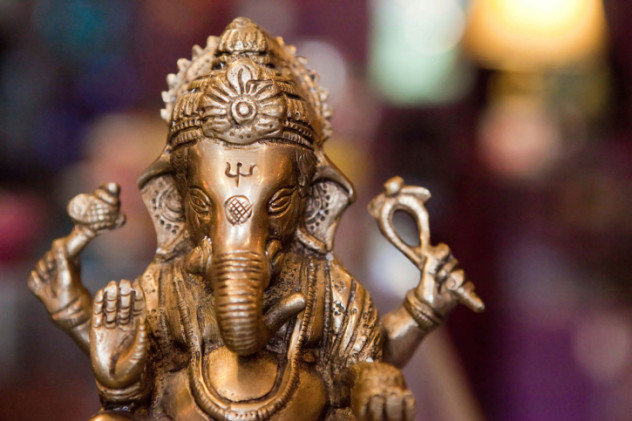
In 1995, all of India was abuzz over an exciting religious phenomenon that seemed to prove the ancient gods were still alive. Stone statues of Ganesha, the elephantine Hindu god of good fortune, were purportedly seen drinking milk given to them.
The milk offerings—puja—were traditionally left before Ganesha statues in order to bring good luck to the adherents. But in 1995 as modernism swept India and threatened to slowly extinguish the ancestral beliefs, the Ganesha statues seemed to remind the Indian people of their ancient religion’s veracity.
These milky miracles caused millions to rush to temples around India to make sacrifices before these living gods. Untold millions skipped work and lined up for miles in order to witness living statues. Some adherents carried entire bucketfuls of milk for their thirsty god. The ensuing religious frenzy was unlike any seen in modern India and was heavily supported by the priestly caste of Hindus, the Brahmins, as a triumph of Hinduism.
But scientists soon derailed the Ganesha pilgrimages with a startlingly simple explanation: the capillary effect, the same effect that makes it look as if a drop of water is about to fall off the faucet before being mysteriously sucked back in. In the same way, the small cracks in the statues sucked up the milk offerings. This simple explanation quickly deflated many pilgrims’ fervor, and the Ganesha statues were soon regarded as normal godly statues again.
5 Wovoka
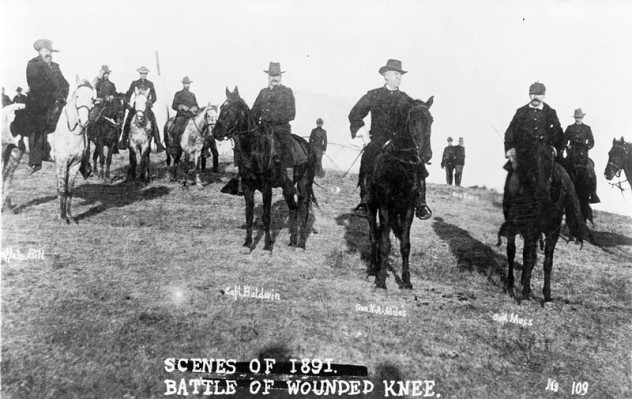
By the late 1800s, Native American freedom had almost entirely disappeared from Canada down to Mexico. The United States frontier was declared officially closed in 1890, which coincided with the last major gasp of Native American rebellion. This final revolt was based around a religious movement that promised freedom for all Native Americans who followed its doctrine.
The movement began when Wovoka, a Paiute Indian, underwent a major prophetic vision on January 1, 1889 during a solar eclipse. In the vision, Wovoka reported seeing all of his Native American ancestors rising again, the buffalo herds returning to the plains, and the white man’s lordship ending. Wovoka preached that his vision could become reality if the Native Americans began to perform a traditional Ghost Dance in five-day intervals.
The Ghost Dance religion spread due to Wovoka’s renown as a medicine man in the Paiute community. Wovoka was famous for performing the difficult bullet-catching trick, which convinced many that his rituals would give them immunity to bullets. Furthermore, many attested to seeing Wovoka execute feats of levitation while controlling the weather.
The Lakota Sioux in the Pine Ridge Reservation of South Dakota eagerly took up Ghost Dance. They added a militaristic sheen to the religion and planned a rebellion against the United States government. The Lakota were confident of their success since they possessed sacred, bulletproof shirts made especially for the Ghost Dance.
The revolt ended prematurely as the US Seventh Cavalry Division surrounded a group of rebellious Sioux on December 29, 1890. Even though the Sioux raised the white flag, the United States cavalrymen fired upon them. More than 200 women and children were killed in addition to many of the warriors. The Wounded Knee Massacre effectively ended Native American resistance and ushered in a new era of American history.
4 Sabbetai Zevi

Sabbetai Zevi was an eccentric genius who declared himself the Jewish messiah in 1648 while living in Turkey. He proved his messianic quality by uttering the Tetragrammaton, the forbidden full name of the Jewish god, Yahweh. At first, Zevi had trouble gaining followers and was banned from his hometown of Smyrna for seven years. It didn’t help Zevi’s campaign that he was possibly manic-depressive and went through flighty moods of panic and depression while fasting for weeks at a time for no apparent reason.
This all changed when Zevi met Nathan of Gaza, who decided to be Zevi’s PR man. To spread Zevi’s reputation as the messiah, Nathan sent letters to every single synagogue in the world proclaiming Zevi’s authenticity. This mass communication caused hysteria of gigantic proportions in the Jewish community. Rabbis around the world, primarily Europe, prepared their flocks for the end of the world with Zevi as their messiah. Zevi’s mass following affected the national economies of European nations as many wealthy Jews sold their belongings and gave up their businesses to follow his lead.
But the Ottoman sultan Mehmed IV soon grew jealous of Zevi’s power and imprisoned him in 1666 in a foreboding Ottoman castle. After months of waiting, the Sultan called Zevi before him and gave him three options: to be judged before a volley of divine arrows, to be impaled, or convert to Islam. Contrary to all predictions, Zevi converted to Islam.
Some Jewish scholars believe the inward-looking and humble Hasidic movement began in opposition to Zevi’s messianic excesses. Still others place Zevi’s conversion to Islam as a seminal moment that fractured the Jewish community and began modern Jewish history.
3 Arnold Potter
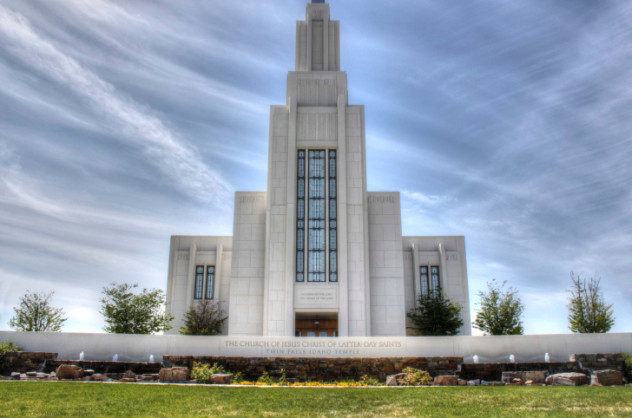
For the first half of his life, Arnold Potter was a typical Mormon preacher who believed the 12 Tribes of Israel secretly migrated to North America and founded a bustling civilization not yet uncovered by archaeology. Potter was a mainstream Mormon preacher in the days when being a Mormon was dangerous. Before settling in Utah in 1847, the Mormons had been driven out of Ohio, then Missouri, then Illinois by angry and violent mobs.
Arnold Potter became a Mormon preacher of the Melchizedek order amid this tumultuous religious atmosphere. He lived a mundane life until traveling to Australia on a mission trip in 1857. In Australia Potter underwent what he described as a “purifying, quickening change” that turned his “mortal body into a spiritual body.” As part of this change, Potter wrote an entire book as dictated by the angels Gabriel and Michael. He also declared himself “Potter Christ, Son of the Living God.”
Potter was not shy about this declaration. He kept “Potter Christ—The Living God—Morning Star” written on his forehead in black ink for the rest of his life. Such eccentricities allowed Potter to amass a small but devoted following. His followers, who believed Potter was Jesus reborn, wore black robes and were deemed strange and heretical by the Mormons, a group everyone else thought was strange and heretical. Perhaps they thought him crazy for making strange predictions, like President Grant being the last president to be elected by the ballot.
The Potter Christ movement reached its climax in 1872 when Potter tried to ascend by jumping off a cliff. His followers did not follow.
2 Muhammad Ahmad
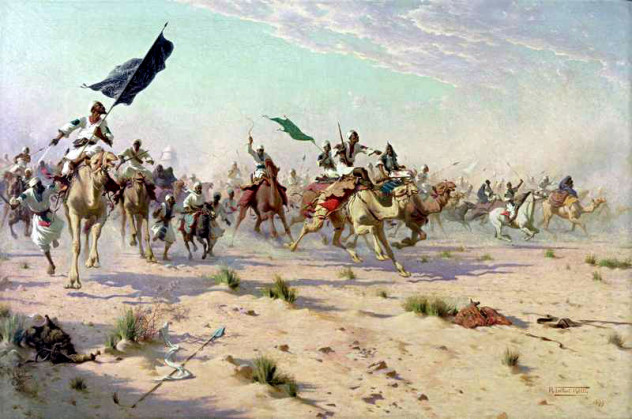
The history of Christianity and Judaism are rich with declarations of self-identification as the Messiah and predictions of imminent world end. Islam is a lot more tranquil with such matters, and there have been only a few messianic prophets since Muhammad. The best known among them is Muhammad Ahmad, who declared himself al Mahdi, the Islamic messiah, in 1880 in modern-day Sudan.
At the time, Sudan was ruled by Egypt, which was in turn controlled by Great Britain. This angered Muhammad Ahmad and many Muslims who resented being controlled by non-Muslims and lamented the loss of true Islam in Sudan. After declaring himself Mahdi, Muhammad Ahmad quickly gathered followers among the disenchanted Muslim masses of Sudan. Ahmad’s claims were bolstered by his apparent invincibility in battle. Even though his forces were poorly armed, often with only spears and muskets, they defeated their European-trained and well-armed Egyptian overlords again and again.
After three short years, Ahmad’s followers had massacred two expeditionary forces sent from Egypt and besieged Khartoum, the capital of Sudan. Ahmad’s armies slaughtered British forces and paraded their general Charles Gordon’s head around on a pike. This victory, the only successful indigenous revolt against Europeans in the 19th century, gave Muhammad Ahmad control over Sudan.
The Mahdi soon created a state based on sharia law, patterned on the original Islamic laws of the Prophet Muhammad. This state was the beginning of an Islamic revolution that hearkened back to the theocracy of early Islam. The Mahdi himself though did not see his state, dubbed the Mahdiya, fully develop though, as he died in June 1885.
His successor, the Khalifa, lived in tense coexistence with the British regime in Egypt for 10 years. The opportunity for revenge came in 1898 with a massive British expedition led by Herbert Kitchener, who would later command the British Expeditionary Force in World War I. Kitchener commanded 25,000 British and Egyptian troops and personally trained them for two years to prepare for the campaign. The army also possessed 40 Maxim machine guns, each capable of firing 600 rounds a minute—the first of their kind.
The two armies clashed on September 2, 1898, in the battle of Omdurman. Kitchener’s 25,000 troops faced off against 52,000 Mahdist soldiers. The Mahdist forces had never been defeated before, which made the Battle of Omdurman all the more tragic. In less than four hours, 10,000 Mahdist soldiers were dead, 30,000 were wounded, and 500 more had been captured. Three hours had undone 15 years of success and the British had lost only 47 men. The Battle of Omdurman quickly became one of the most lopsided defeats of all time, and Kitchener exacted his revenge on Ahmad by digging up the Mahdi’s body and pulling out his fingernails.
1 The Munster Rebellion
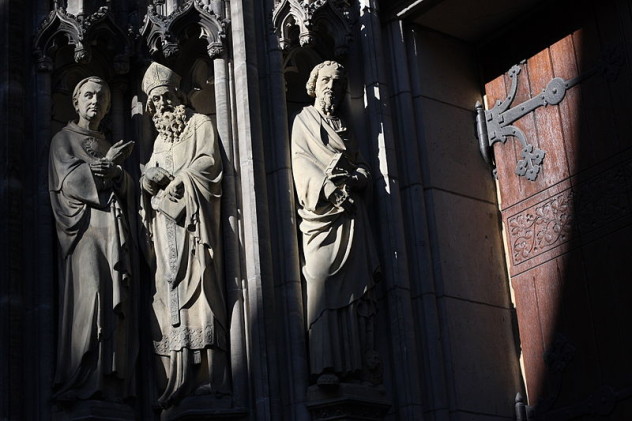
Munster, a medium-size German town, became the home of a bizarre socialist experiment for a brief 12-month period in 1534. It was started by the Anabaptists, one of the many splinter Protestant groups finding footing after Martin Luther began the Reformation. The Anabaptists tirelessly campaigned against the notion of infant baptism and only accepted baptisms performed on consenting adults.
This placed the Anabaptists at odds with the dominant Catholic hierarchy, particularly the Bishop of Munster, Franz von Waldeck. The Anabaptists, led by Jan Matthys, soon gained control of the city government and ejected the Catholics from Munster. They declared Munster the “New Jerusalem” and the location of the new Millenium.
The new rulers divided up the goods of the city and distributed them evenly so that all could enjoy the Lord’s splendor. They also did likewise with women and legalized polygamy. In just one year, John of Leiden, the second in command, acquired 16 wives. The polygamy was also practical since Munster had 2,000 men and 7,000 women.
New Jerusalem was constantly under siege by the old bishop and his army of 7,000 Landsknecht mercenaries. A few attempts were made by other Protestants to relieve Munster, but they ended in failure. Many neighboring towns offered soldiers to the Catholic cause and the situation in Munster became increasingly dire.
In June 1535, the Catholic forces finally overwhelmed Munster and killed almost the entire town. The Anabaptist ringleaders were chained to stakes in the public square, tortured, and finally killed with daggers to the heart. Their remains were displayed in iron cages for decades.
Geoffrey is a comedian who accidentally earned seven liberal arts degrees and is wondering how to pay for them. Follow his journey on Twitter @filthyson

